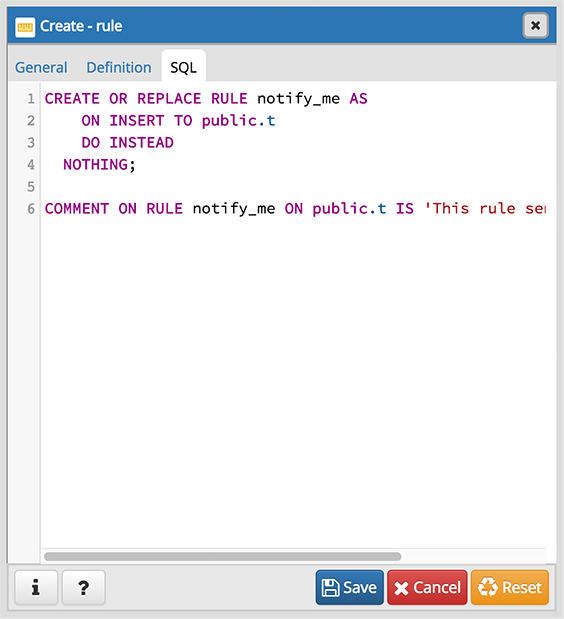
Once you have successfully connected to the local database server, you will get an interface similar to the following.
#Pgadmin 4 sql beginner tutorial password
Note: Your version may be different than the above and so the port number (5432).Ĭonnect to the server by entering the password that you gave during the installation. When you open up pgAdmin, you will see a server named "PostgreSQL 9.4 (localhost:5432)" enlisted in the interface. pgAdmin is a handy utility which comes with the PostgreSQL installation, and it lets you do regular database related tasks through a nice graphical interface. Once you have installed PostgreSQL successfully on your machine, open up pgAdmin. Note: While you are installing PostgreSQL take note of the password and port number that you are entering.

The following two short videos show you how PostgreSQL can be downloaded and installed on a 32-bit Windows-7 machine: To be able to start writing and executing queries in PostgreSQL, you will need it installed on your machine. You can learn more about PostgreSQL from its official website. It is extremely well accepted by the industry. PostgreSQL is a light-weight and an open source RDBMS.
#Pgadmin 4 sql beginner tutorial update

This is just one of them and the most popular one. There are a number of ways in which databases can be represented. Generally, relational databases look like the following. It has got some historical significance - the initial name of SQL was Simple English Query Language. So, the knowledge of databases and being able to handle them are crucial parts of a data scientist's toolbox. Without databases, practically no real-world application is possible.

SQL not only enables you to you ask meaningful questions to the data but also allows you to you play with the data in many different ways. SQL or Structured Query Language lets you do this in a very efficient way. Being able to query the relational database systems is a must-have skill for a data scientist.


 0 kommentar(er)
0 kommentar(er)
